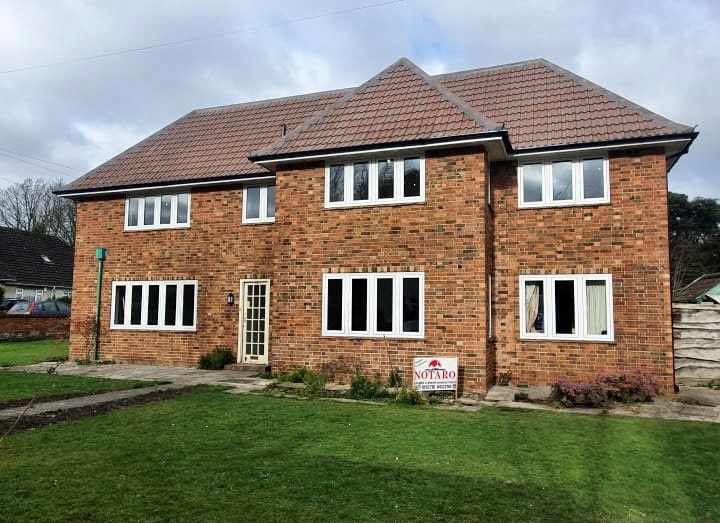
If you are considering casement window installation for your home but want to know a bit more about them, this blog answers all the frequently asked questions that you might be wondering about. Read on to find all the information you need about casement windows, so you can decide whether they’re the right fit for you!
What are casement windows?
First, it’s important to understand exactly what casement windows are. It is a popular and versatile design, and casement window installation is very popular in the UK. The window is hinged at the side and usually fitted with double or single panels. Being hinged at the side, top, or bottom allows the window to open in the middle, so you can have a complete view out from the opening of the window. They usually come in aluminium or PVCu casement windows, with PVCu for a more traditional style and aluminium for a more modern look.
What are some of the advantages and disadvantages of casement windows?
Some of the advantages of casement windows are that the hinge on them makes them easy to open and close. They are energy efficient as they are available with glazing options, and their strong seals are good for preventing air leaks. Casement windows are also highly customisable, with many different finishes and colour options to choose from. There are a wide range of materials to choose from if you want to change their appearance. Casement windows are also known for being low maintenance. They’re easy to clean both on the inside and outside for a great look all year, and the mechanisms are simple to maintain, making them less likely to stiffen or break.
There are also a few considerations to be aware of. One of which is the limited size options. It’s important to double check you can find the right size before going ahead with casement window instillation, as some larger sizes of windows may be harder to find. Casement windows also open outward, so it’s not possible to install window air conditioners into them. Air conditioners require windows that slide up and down instead. These types of windows also don’t allow for screens or storm windows to be fitted, as they would not allow them to open outward properly.
Different casement window styles
Casement windows are offered in several styles, such as:
Single frame casement windows
These are the most common types of casement windows; each single frame is hinged on one side and opens outwards. They are a good option for smaller rooms or where you want to see the non-obstructed view outside.
Double frame casement windows
Double frame casement windows consist of two sashes that are hinged on either side; they provide a good amount of ventilation and are great for bigger rooms where a large view suits the space. They also provide a large amount of natural light to any room they’re in.
Traditional
These are sometimes referred to as French casement windows and often have a wood finish, sometimes with glazing bars. This style can be suited to period properties but can still be used with newer-looking aluminium-style frames to create a personalised look.
Flush Casement Windows
This style of window uses PVCu casement windows to replicate the appearance of timber. It adds modern elements to traditional design with ease and can give modern properties a more period aesthetic.
The different parts of a casement window
Some of the different parts of a casement window include:
Fanlight – this is a smaller opening section found at the top of the window, which is usually rectangular.
Head – sometimes known as the first mullion, which is the horizontal bar across the very top of the window frame.
Casement – the part of the window that opens, in which the glass sits.
Stile – the vertical edges of a casement
Mullion – the vertical bar that sits within the frame and separates two casements, such as a fixed pane and an opening casement.
Transom – a horizontal bar that separates two casements, for example, a fixed pane and a fanlight casement.
Direct glaze – this is where the aperture for a casement is directly glazed with glass without a casement.
If you’re interested in casement window installation, don’t hesitate to get in touch so we can help find the perfect windows for you. Our team is on hand to answer any questions you may have. Just call Notaro Windows at 01278 662298.
